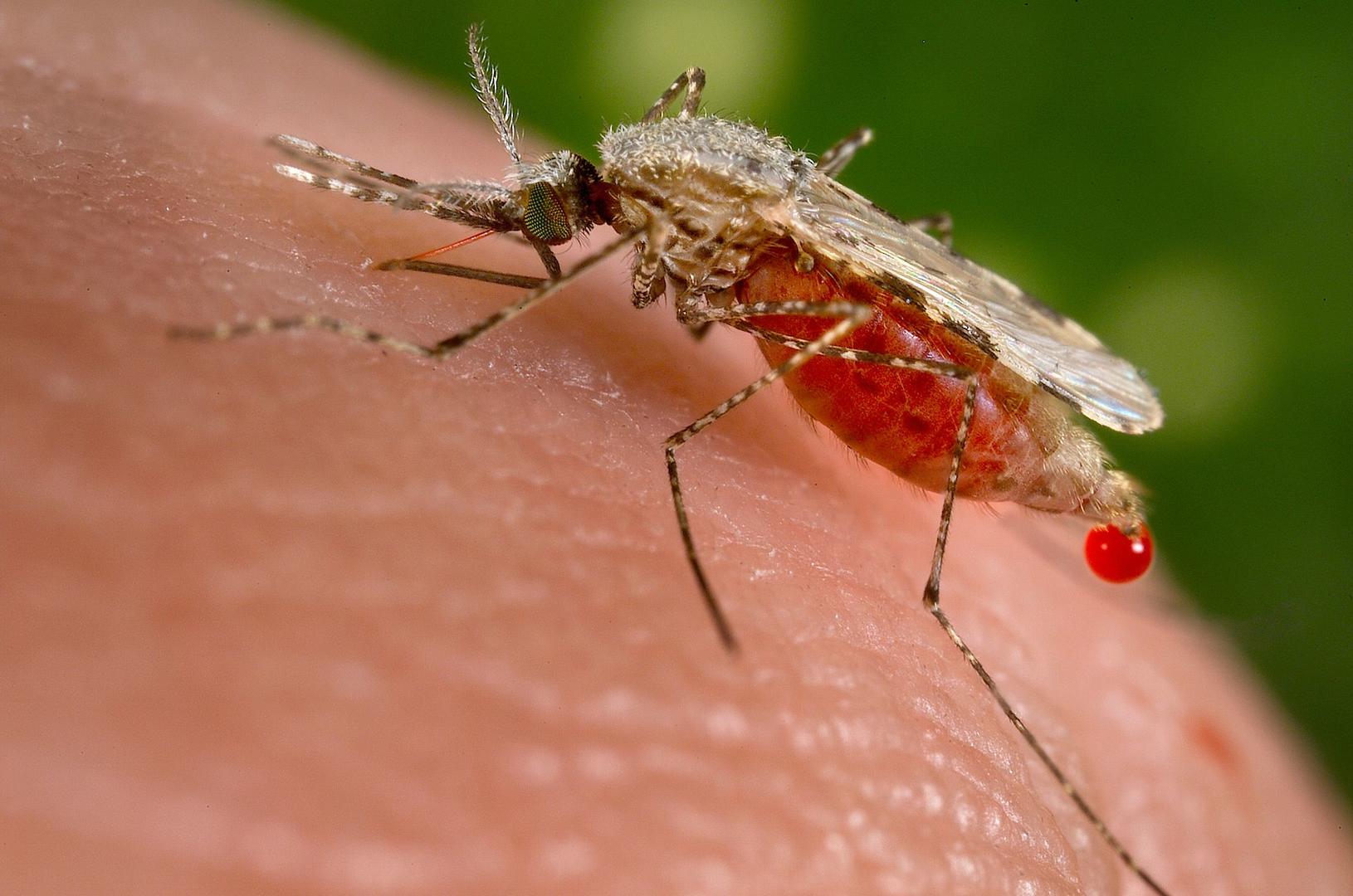
An Anopheles stephensi mosquito obtaining a blood meal from a human host through its pointed proboscis. Note the droplet of blood being expelled from the abdomen after having engorged itself on its host’s blood. This mosquito is a known malarial vector with a distribution that ranges from Egypt all the way to China. / CDC
Here's a stat that Unicef trots out almost every year: Every two minutes, a child under five dies of malaria.
- In 2019, there were 229 million malaria cases globally that led to 409 000 deaths.
- Of these deaths, 67% (274 000) were children under 5 years of age.
- This translates into a daily toll of nearly 750 children under age 5.
Now we know how to beat malaria; it's been done before in the US where they simply sprayed 5 million American homes with DDT; this eradicated the mosquitos and wiped out malaria; but that's not going to happen in Africa because … reasons.
(I've written in detail about this in the past. Here's the link. But let's move on.)
For someone infected with the malaria parasite, early diagnosis and treatment is essential. Fever is one of the early obvious signs of malaria.The problem is that children develop fevers for a range of other acute infections too. One cannot simply administer malaria treatment without first confirming that the child is actually infected.
Kenya’s Ministry of Health yesterday launched a malaria diagnostic kit to boost timely detection and treatment.
Rashid Aman, the chief administrative secretary in the Ministry of Health, said that the malaria rapid diagnostic kit (PlamoCheck) was invented by local researchers.
The kits made by the Kenya Medical Research Institute are already being sold in pharmacies at 60 shillings.
(That's about 53 US cents per kit which is around R8.)
I'm impressed, Kenya. I wish we had that level of competence in my country.
